Find out what to consider when choosing an open-concept bathroom
Wet rooms can include a rain shower head high on the wall or the ceiling, or a wall-mounted handheld shower. Rain heads are particularly useful in a wet room because they spray downward, which keeps water from getting into the rest of the bathroom. A freestanding tub might be in the space, and a steam shower and accessories such as a bench are natural additions. The walls are usually tiled from floor to ceiling for water protection.
Curbless shower. Some wet rooms have a curbless shower area, with or without a typically frameless glass pane to separate it from the rest of the space. Having the shower area on the same level as the rest of the bathroom creates a seamless look and is practical for anyone who’s mobility-impaired. There must be a slope in the floor to keep water from pooling outside the shower area.
This wet room in Mukilteo, Washington, is a remodel designed by Kristine Tyler of Tree Frog Design. “They hired me and said, ‘Our bath is dated. We want a walk-in shower and we want a soaking tub, so design away,’ ” she says. The result is a striking open space with large-format tile, Hansgrohe fixtures, a dramatic light fixture, a towel warmer and even a television, plus a view of Puget Sound.
Wet Room Considerations
Wet rooms can certainly dramatize a space and be a striking focal point in a home. All the extra wall and floor space lets you get creative with tiling. Some homeowners think it’s easier to clean a wet room, while others lament the amount of tile that has to be wiped down. Like any type of renovation, there are pluses and minuses.
A wet room also works in a smaller space without a freestanding tub. Designer Sarah Jefferys worked on the renovation of this main bathroom in a New York City apartment and created a small wet room with a built-in tub.
“A freestanding, more curvy tub does not work well in a restricted space, as it’s hard to access corners behind the tub to clean,” she says. “We have found this shower-tub combination works very well together, allowing a walk-in shower without having to step into a tub, and a separate deep soaking tub that fits snugly into a niche.”
The beautiful patterned wall tile behind the tub is Ann Sacks glass segmented hexagonal mosaic in a custom finish, and the other wall and tub tile is 4×16-inch Bianco Dolomiti marble. The floor is Bardiglio marble tile.
Minuses. The reality is that renovating a bath with special waterproofing, floor construction and extra tiling all the way to the ceiling will entail added cost. And future homebuyers may prefer traditional bathroom layouts, potentially affecting resale value.
Freestanding tubs aren’t practical for everyone and can be difficult to climb into and out of. A swivel-type mop is helpful for cleaning around this type of tub, if there’s enough room. A larger open space requires adequate heating, preferably in-floor radiant heating, which can also add to the expense.
Essential Materials
Tile. Because of the openness of a wet room, there’s a larger area that can get wet, so using waterproof tile is essential. Porcelain and ceramic tiles are more practical than cement and natural stone because they’re not porous. Tile used for flooring should be nonslip. Smaller mosaics have more grouting and create better grip; when using large-format tile with less grouting, make sure the tile surface is textured to make it less slippery.
The penny round mosaic floor tile in this large wet room in Denver, designed by Ashley Campbell Interior Design, has enough grouting to provide plenty of grip and is a striking contrast to the large-format marble-like wall and ceiling tile.
Getting It Installed
Replacing a standard bathroom with a wet room is not your typical DIY project. You’ll need to hire a plumber or construction team to work on plumbing alterations and construct a floor that slopes to the drain. A gradient of 1.5 to 2 degrees is recommended for floor slope, and square or linear drains can be used. A waterproof membrane is typically installed on the walls before they’re tiled. The floor needs a waterproof substrate beneath the tile.
In this sleek wet room created in a Melbourne, Australia, renovation by GIA Bathrooms & Kitchens, the drain is below the shower head and the floor is appropriately sloped.
“There has been a gradient created below the freestanding bath so water that gets behind the bath will fall into the shower waste,” Olivia Cirocco of GIA says, referring to the shower trap that collects water below the floor. The 12-by-24-inch white wall tile is a bright contrast to the 24-inch-square gray terrazzo floor tile that also stretches up as a backsplash.
Water flows into a square drain in this wet room in Christchurch, New Zealand, rebuilt after an earthquake by Pynenburg & Collins Architects. Bright subway tiles line the walls and a partial glass pane partitions the bathing area. Wet rooms are becoming more popular for those who want to relax and unwind in the bath, says the firm’s director, Jody Seabright.
“You want it to feel spacious and inviting, where you don’t have to worry about how you use it or how long you use it,” he says. “As people are tending to reassess how they live and what is important to them, creating private spaces that enrich your day-to-day life is becoming more important to many people.”

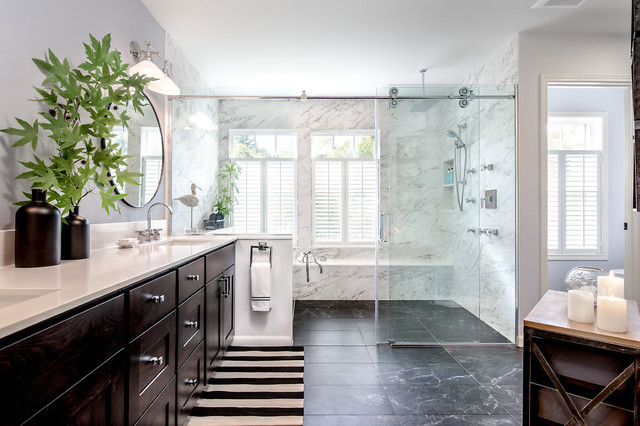
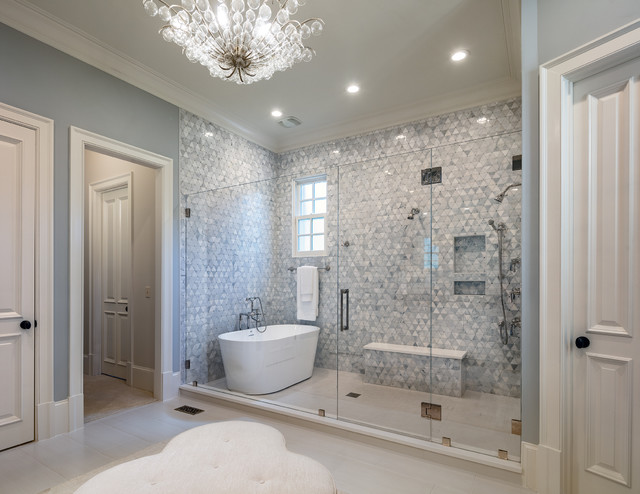


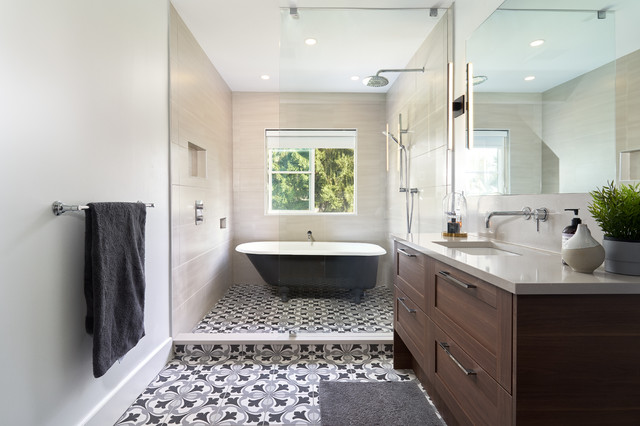
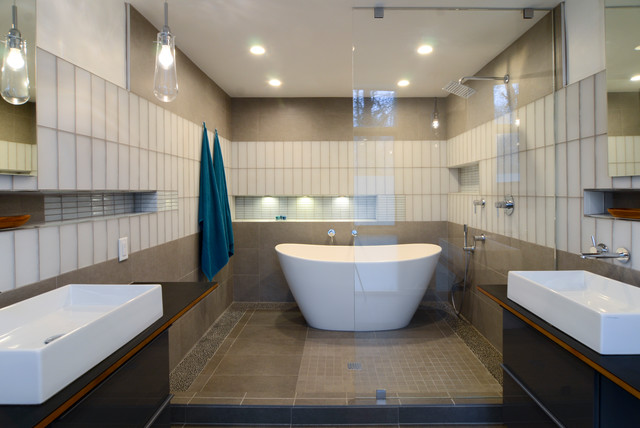
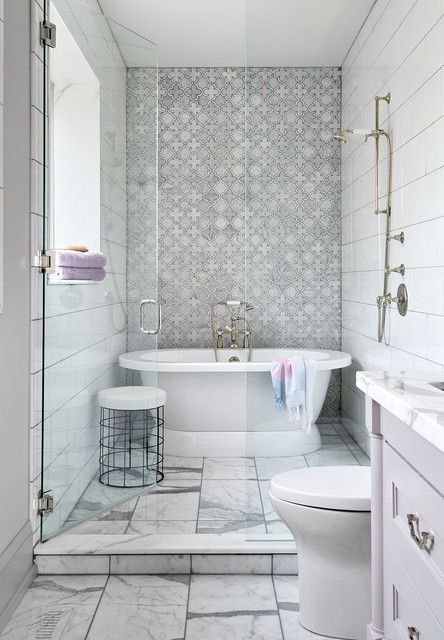
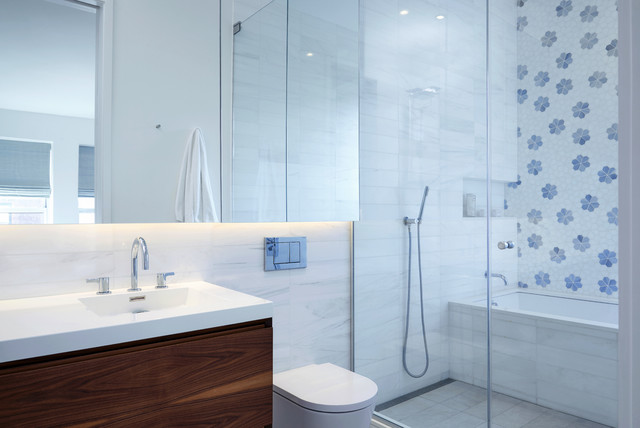
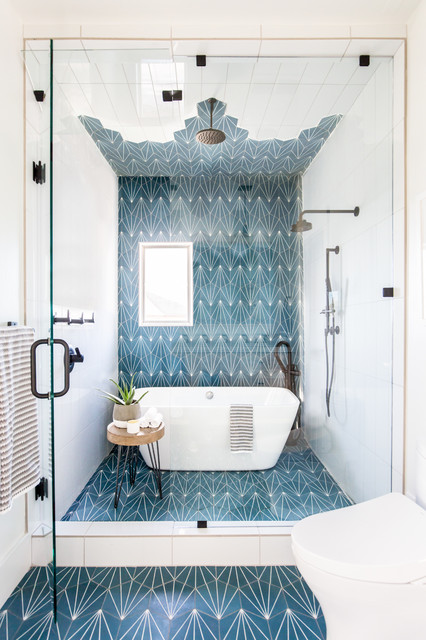

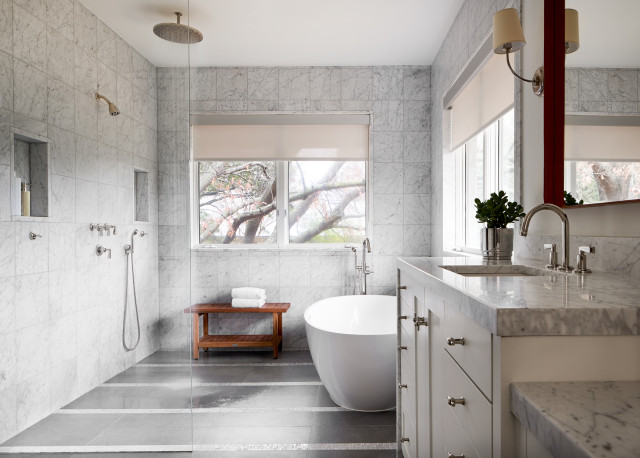
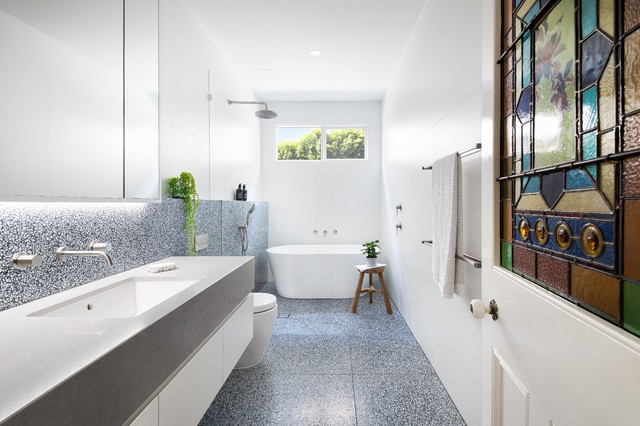
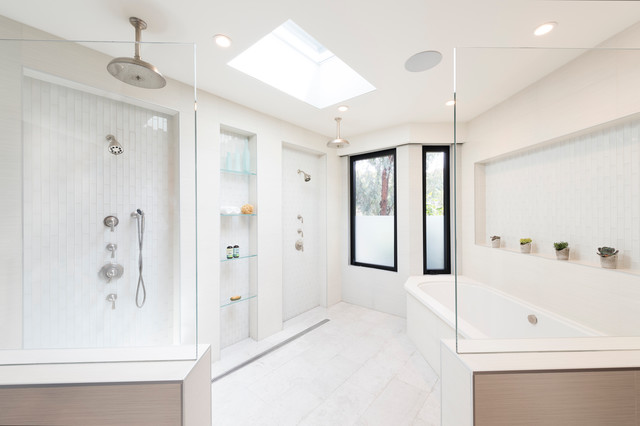
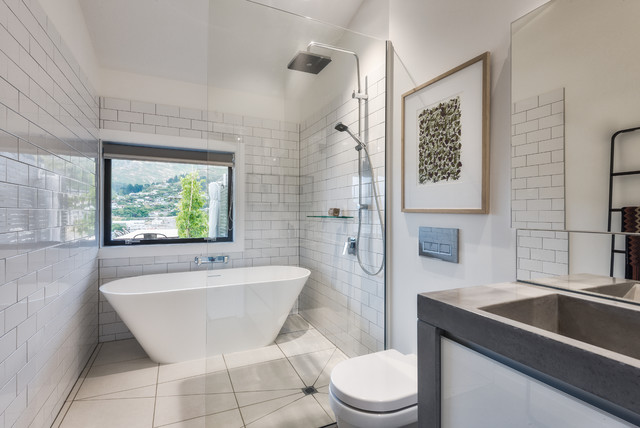
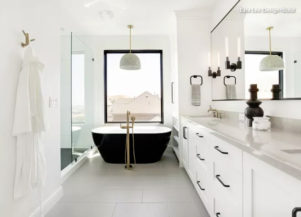
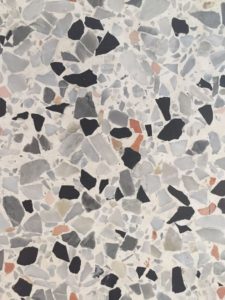
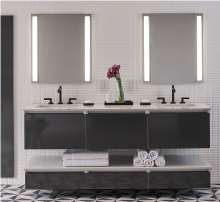
What Is a Wet Room?
Wet rooms have either a curbless or low-curb walk-in shower that may be partially or fully glass-enclosed or have a pony wall to provide some separation and contain splashes, with flooring that has a slight gradient so water flows to the drain and not the rest of the space.
This curbless shower in Seattle, designed by Very Red Design, has floor tile that extends into the rest of the bathroom for a consistent, streamlined look. A pony wall provides some separation and privacy and the shower glass slides open.